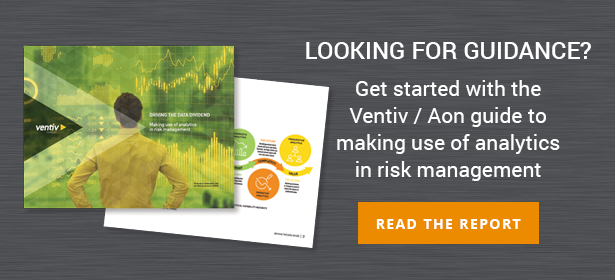Although it can often be hard to secure budget for big changes, or even prove the benefits of such change, the digitization of your business can have huge rewards.
Investing in digital tools can add significant value for stakeholders and risk partners, in terms of better efficiency and competitive edge.
The benefits of digital tools can be easy to prove
Examples:
- Risk Management SaaS technology can provide the senior management team with easy access to risk and insurance statistics and KPIs which can support business strategy decisions.
- Having accurate, complete data easily to hand enables risk and insurance managers to engage with underwriters for better policy terms and premiums.
- Cost and time savings can be found in automation of manual, repetitive processes so managers can spend their budgets on more productive areas.
- With legacy systems tied together and information stored in one place, it creates a single version of truth, and if it is accessible across the company (based on permissions), data transparency can improve internal collaboration and reporting.
Essentially, good data and a good digital strategy means that your business can respond quicker in an agile environment.
When you implement a digital strategy – from choosing an effective data repository to making use of conversational query searches for more robust reporting – you can find answers to many questions.
You might have questions like:
- As an insurer, how do we detect potential fraud?
- As a risk or insurance manager, how do I decide which risks would have a more significant impact on our business?
- As a claims manager, how do I identify which will likely be high-loss claims?
- As a safety manager, where should I spend my safety budget?
Digital tools at the fingertips of risk managers in 2020
For risk managers, managing large data sets through digital technology has huge advantages. In order to answer some of the questions above and add value to your stakeholders, you have a number of digital tools at your fingertips.
Data intake
Capture tools that reduce human error, have the capacity to be completed on the go and flow back to an RMIS software in real-time are just some of the exciting features available. A user friendly and intuitive interface for end users means no system training is needed to input renewal, accident or claims data. The whole process is quicker and more accurate than manual forms. Plus, you can assess, analyze and report on data immediately.
Data repository
Better reporting and ad hoc queries are made possible by integrating data sets and storing information in one cloud-based data repository, such as a data lake or warehouse. Cloud technology makes information accessible 24/7 from anywhere. With logical data mapping, you can simplify search queries and data science is brought into the mainstream – overcoming the lack of skilled data scientists available.
Integration of third party data sources
You can supplement your own data and take into account external factors as part of your business strategy with third party feeds. Data services, such as weather, census, industry and social data from reliable sources can help you make better predictions and take advanced action.
Advanced analytics
Advanced analytics create value through data driven decision making. It enables the risk/insurance team to visualise the data using the latest reporting tools and put these outcomes into forming credible business strategies. Tools like Ventiv Analytics take traditional reporting several steps further, with prescriptive and automated predictive analytics.
The benefits of good analytics are far reaching. As well as forming the basis of key decisions, they can help identify problem areas, see how to mitigate undesirable outcomes before they happen, and decide how to distribute resources for the best effect.
Automation
Technology has been taking leaps and bounds in terms of automation. For example, technology and financial services companies have been using robotics and AI for customer service through chat bots to reduce the pressure on call centres. Technology companies are working on how to capture semantic relationships between words so machines can be better at understanding natural language.
Keeping the momentum going
The internet, as well as and technology investments have led to digital tools that have significantly improved efficiency in business over the past decade – from customer service to big data and analytics. While businesses are catching up in the world of digitization, make sure you have your digital strategy prepared.
Speak to the Ventiv team to discuss how risk management technology can support digitization in your organization.
David Thomas is the Sales Director at Ventiv Technology. If you would like any further information on this topic please contact him
at DAVID.THOMAS@VENTIVTECH.COM 














